What you see during Everest Base Camp and Kalapathar Trek
The trekking adventure to the Everest Base Camp brings trekkers the chance to encounter Himalayan magnificence. In addition, you will also experience the cultural riches of the Sherpa community. Exploring the Everest region on foot for twelve days gives you an unforgettable experience that blends culture, nature, and adventure.
Departs from Kathmandu, Nepal
Overview:
Have you ever thought of going to the base camp of the highest mountain on earth? If you love trekking, you certainly want to walk there. Everest Base Camp and Kalapathar Trek is one of the most sought-after trekking adventures.
Hundreds of thousand trekkers tread on the trail to the Everest Base Camp every year. The adventure takes you to the magnificent Himalayan region and ultimately to the base camp of Mt. Everest. The Everest Base Camp and Kalapathar trek adventure takes you to the Everest base camp and then to Kalapathar which stands higher than the base camp. You can enjoy the breathtaking panoramic view of the mountains including Mt. Everest.
Trip Information:
The Everest Base Camp trek on the south side, at an elevation of 5,364 m (17,598 ft), is one of the most popular trekking routes in the Himalayas, and about 40,000 people per year make the trek there from Lukla Airport (2,846 m (9,337 ft)).[5] Trekkers usually fly from Kathmandu to Lukla to save time and energy before beginning the trek to the base camp. However, trekking to Lukla is possible. There are no roads from Kathmandu to Lukla and as a result, the only method of transporting large and heavy goods is by plane. Kalapathar trek and the Everest Base Camp trek route follow the given itinerary. You can add or remove days of trek depending on the chosen route.
The Everest Base Camp trek on the south side, at an elevation of 5,364 m (17,598 ft), is one of the most popular trekking routes in the Himalayas, and about 40,000 people per year make the trek there from Lukla Airport (2,846 m (9,337 ft)).[5] Trekkers usually fly from Kathmandu to Lukla to save time and energy before beginning the trek to the base camp. However, trekking to Lukla is possible. There are no roads from Kathmandu to Lukla and as a result, the only method of transporting large and heavy goods is by plane. Kalapathar trek and the Everest Base Camp trek route follow the given itinerary. You can add or remove days of trek depending on the chosen route.
What you see during Everest Base Camp and Kalapathar Trek
The Everest Base Camp Kalapathar trek package brings trekkers the chance to encounter Himalayan magnificence. In addition, you will also experience the cultural riches of the Sherpa community. Exploring the Everest region on foot for twelve days gives you an unforgettable experience that blends culture, nature, and adventure. Everest Base Camp to Kala Patthar distance is approximately 4 km. Kalapathar trek highlights adds extra charm to EBC trek
As you trek through the Sherpa villages in the region, you will learn about the famous Sherpa people and their lives. These people are famous for climbing the mountains. Any Mountaineering Expeditions or Peak Climbing Adventures become successful only because of these amazing Sherpas.
You will see the view of beautiful mountains like Thamserku, Ama Dablam, Lhotse, Lobuche, Everest, Pumori, and several others. The entire mountain range that you will see during the trek will blow your mind away. In addition to the mountains and Sherpa settlements, you will also experience the serenity of nature and the wilderness of high mountains.
Several beautiful monasteries, Mani walls, and prayer flags will add more to the experience.
Reasons this trip becomes an Experience
Nepal Climbing Adventure always strives to offer an adventure traveling experience that you can cherish. While the Everest Base Camp and Kalapathar Trek is beautiful in its all essence, your trekking experience becomes even more beautiful with us. Kala Patthar view of Everest is mesmerizing and fulfilling in itself.
By the time we take you to the base camp and bring you back, we will be one step ahead and offer you a beautiful experience. Our top priority is keeping your safety and happiness, and you will experience the same during the trip.
Trekking with us to Everest Base Camp and Kalapathar is traveling in safe hands.
Highlights of Everest Base Camp and Kalapathar Trek
Here are a few highlights of EBC and Kalapathar Trek.
- Stunning Himalayan Views of Mount Everest (8,848 meters/29,029 feet), the world's highest peak.
- Kalapathar provides one of the best panoramic views of Everest and the surrounding peaks, especially at sunrise and sunset.
- Iconic Landmarks
- Tengboche Monastery in the Khumbu region, is known for its spiritual significance and backdrop of Everest.
- Views of Khumbu Glacier which is one of the world's highest glaciers, located near Everest Base Camp.
- Explore traditional Sherpa culture and hospitality in villages like Namche Bazaar, Phakding, and Khumjung.
- Sagarmatha National Park: A UNESCO World Heritage Site, rich in flora, fauna, and cultural heritage.
- Trek through lush forests, rugged trails, suspension bridges, and high-altitude landscapes.
- Reaching Everest Base Camp height at 5,364 meters (17,598 feet) and Kalapathar at 5,545
- The bustling market town of Namche Bazar is the perfect place for acclimatization and exploring local shops and cafes.
- Spectacular Views of Thamserku and Kongde Ri peaks.
- Watching the sunrise or sunset over Everest from Kalapathar is a memorable experience.
- Enjoy local dishes such as Sherpa stew, momos (dumplings), and authentic Dal Bhat.
Everest Base Camp Trek vs. Annapurna Circuit
Both the Everest Base Camp Trek (EBC) and the Annapurna Circuit Trek are renowned trekking routes in Nepal, each offering unique experiences. Here's a comparative overview:
Everest Base Camp Trek:
The Everest Base Camp trek itinerary usually takes 12-16 days
Route: Kathmandu → Lukla → Phakding → Namche Bazaar → Tengboche → Dingboche → Lobuche → Everest Base Camp → Kala Patthar → Pheriche → Namche Bazaar → Lukla → Kathmandu
Annapurna Circuit Trek:
Annapurna circuit typically takes 15-20 days
Route: Kathmandu → Besisahar → Bhulbhule → Ngadi → Jagat → Dharapani → Chame → Pisang → Manang → Yak Kharka → Thorong Phedi → Thorong La Pass → Muktinath → Jomsom → Pokhara → Kathmandu
|
Aspect |
Everest Base Camp Trek |
Annapurna Circuit |
|
Duration |
12-16 days |
15-20 days |
|
Maximum Altitude |
Everest Base Camp: 5,364 meters (17,598 feet) Kala Patthar: 5,644 meters (18,519 feet) |
Thorong La Pass: 5,416 meters (17,769 feet) |
|
Scenery and Terrain |
Spectacular views of Everest and glaciers; varied terrain including forests, meadows, and high-altitude desert |
Diverse landscapes from subtropical forests to high-altitude deserts; views of Annapurna, Dhaulagiri, and Machapuchare |
|
Difficulty |
Moderate to challenging; primarily due to altitude |
Moderate to challenging; especially for Thorong La Pass crossing |
|
Accommodation |
Tea houses and lodges; basic facilities |
Tea houses and lodges; generally more comfortable and modern facilities |
|
Cultural Experience |
Rich Sherpa culture, monasteries, traditional villages |
Diverse cultures including Gurung, Magar, and Tibetan influences |
|
Best Time to Trek |
Spring (March to May) and Autumn (September to November); avoid Monsoon and Winter |
Spring (March to May) and Autumn (September to November); avoid Monsoon and Winter |
|
Permit Requirements |
TIMS card, Sagarmatha National Park permit |
TIMS card, Annapurna Conservation Area Permit (ACAP), and sometimes a restricted area permit |
Everest Base Camp and Kala Patthar Trek Difficulty
The Everest Base Camp (EBC) and Kala Patthar trek is a challenging adventure that requires careful preparation.
1. Altitude
- Everest Base Camp: Everest Base Camp trek altitude is 5,364 meters (17,598 feet)
- Kala Patthar: 5,644 meters (18,519 feet)
- Kalapathar trek Difficulty Factor: High altitude increases the risk of altitude sickness. Symptoms can include headaches, nausea, dizziness, and shortness of breath. Proper acclimatization is essential to manage altitude-related challenges.
2. Trekking Duration
- Everest Base Camp and Kalapathar trek duration takes 12-16 days.
- Difficulty Factor: Longer treks require stamina and endurance. The trek involves multiple days of hiking at high altitudes, which can be physically demanding.
3. Terrain
- Lower Altitudes: Lush forests, terraced fields, and river valleys
- Higher Altitudes: Rocky trails, glacier moraines, and alpine meadows
- Difficulty Factor: Terrain can be rugged and uneven, particularly at higher altitudes. Trail conditions can be challenging due to snow or ice.
4. Physical Fitness
- Requirement: Good physical condition is necessary.
- Difficulty Factor: The trek involves long hours of hiking each day. A good level of cardiovascular fitness and stamina is required to handle the daily distances and altitude.
5. Acclimatization
- The altitude sickness for the Everest Base Camp Kalapathar Trekking requires adequate acclimatization days to adapt the body as per the environment.
- Difficulty Factor: Trek itinerary includes rest days to help acclimate. Skipping these rest days or ascending too quickly increases difficulty and health risks.
6. Support and Logistics
- Guides and Porters: Many trekkers use Everest Base Camp and Kalapathar trek guide and porters to carry gear and assist with navigation.
- Difficulty Factor: Using support services can ease the physical burden and logistical challenges, but trekkers still need to be prepared for high altitudes and variable Everest Base camp trek weather.
7. Health and Safety
- Altitude Sickness: Common at high elevations; symptoms can vary from mild to severe.
- Emergency Response: Knowing the signs of altitude sickness and having a plan for emergencies is crucial.
8. Summary of Difficulty
- Overall Difficulty: Moderate to challenging
- Key Challenges: High altitude, variable terrain, and weather conditions
9. Preparation Tips:
- Training: Engage in cardiovascular and strength training to build stamina and endurance.
- Acclimatization: Follow a well-planned itinerary with acclimatization days.
- Gear: Invest in good-quality gear suitable for cold and rugged conditions.
- Health: Stay hydrated, eat well, and listen to your body to manage altitude sickness.
Everest Base Camp and Kalapathar Trek Cost
Kala Patthar trek cost usually depends on several factors like chosen itinerary, acclimatization days and pace of the travelers. The cost consists of permits, fees of guides, porters and meals with traveling medium throughout the trek. This Everest Base Camp and Kalapathar trek cost around $1400 - $1500. This cost can be reduced if you travel with your group. We have several group discounts for the trek to Everest Base Camp and Kalapathar.
Everest Base Camp trek cost and Kalapathar trek cost can be reduced as per the group. Here is the breakdown cost for the group:
|
Group size |
Cost |
|
1 |
USD 1490 |
|
2 - 4 |
USD 1400 |
|
5 - 7 |
USD 1250 |
|
8 - 10 |
USD 1150 |
|
11 - 15 |
USD 1000 |
Best Time for Everest Base Camp and Kala Patthar Trek
The best time for Everest Base Camp trek and Kala Patthar is during the two main trekking seasons, which offer the most favorable weather conditions.
Spring (March to May):
During this season, the skies are clear and the weather is stable. It offers a moderate temperature that is ideal for trekking with excellent visibility of the mountains.
The temperature during the spring in the day time is usually 10°C to 15°C (50°F to 59°F) at lower altitudes and at night this temperature falls up to 10°C to -5°C (14°F to 23°F) at higher altitudes. The major advantages of this season are Optimal weather conditions, good visibility, and relatively warmer temperatures.
Autumn (September to November):
During the Autumn Season, the weather in Everest Base Camp Kalapathar expedition offers Clear skies, dry conditions, and stable weather. Temperatures start to drop but are still manageable. Usually, the temperature during the daytime is 5°C to 10°C (41°F to 50°F) at lower altitudes, and in Nighttime it is 15°C to -10°C (5°F to 14°F) at higher altitudes. The major advantages of this season are Stable weather, less crowded compared to spring, and good visibility.
Other Seasons:
Summer (June to August):
During the summer, the Monsoon season comes with heavy rainfall, increased humidity, and potential landslides. Higher altitudes may experience snow and mist. Rain and fog can make trails slippery and reduce visibility. Although the trek cost is usually low and the trail has a lesser number of climbers, It is not recommended due to challenging conditions.
Winter (December to February):
The winter has extremely cold temperatures, snow-covered trails, and high winds. It has several impacts like severe cold and potential snow accumulation that make the Everest Kalapathar Trek very challenging. It is also not recommended for most trekkers due to harsh conditions.
Permits for Everest Base Camp and Kala Patthar Trek
To trek in this region, Everest Base Camp trek permits are required. Here’s a summary of the necessary Everest base camp trek Kalapathar permits:
1. TIMS (Trekkers' Information Management System) Card: It is a permit issued to keep track of trekkers in Nepal and ensure their safety. TIMS cards usually cost USD 10-20, depending on the type and trekking agency handling the application.
2. Sagarmatha National Park Permit
- Purpose: Required to enter and trek in the Sagarmatha National Park, which includes the Everest region.
- Cost: Approximately USD 30 (for foreigners) and around NPR 1,000 (for SAARC nationals).
- Obtained: At the entrance of the Sagarmatha National Park or through a trekking agency.
3. Khumbu Pasang Lhamu Rural Municipality Permit
- Purpose: A new permit required for trekking in the Khumbu region, including Everest Base Camp.
- Cost: Approximately NPR 2,000 (USD 15-20).
- Obtained: At the entry point of the Khumbu region or through a trekking agency.
4. Additional Permits
- For Specific Routes: Some trekking routes or regions may require additional permits or permissions. Check with your trekking agency or local authorities for the most current requirements.
Trek Permits:
- TIMS Card: Required for all trekkers.
- Sagarmatha National Park Permit: Mandatory for entering the park.
- Khumbu Pasang Lhamu Rural Municipality Permit: Required for trekking in the Khumbu region.
Outline Itinerary for Kalapathar Everest Base Camp Trekking
Day 01: Arrival in Kathmandu (1400m)
Day 02: Kathmandu – Phakding 2,680m
Day 03: Phakding – Namche Bazar 3,440m
Day 05: Namche – Tengboche 3,860m
Day 04: Acclimatization Day
Day 06: Tengboche – Dingboche 4,410m
Day 07: Acclimatization Day
Day 08: Dingboche – Lobuche 4,940m
Day 09: Lobuche – Everest Base Camp 5,364m – Gorak Shep 5,164m
Day 10: Gorak Shep – Kalapathar 5,545m – Pheriche 4,371m
Day 11: Pheriche - Namche Bazaar 3,440m
Day 12: Namche - Lukla 2,860m
Day 13: Lukla - Kathmandu 1400m
Day 14: Contingency Day in Kathmandu
Day 15: Departure Day
Accommodations and Meals During Everest Base Camp and Kala Patthar Trekking
Accommodations and meals during the Everest Base Camp and Kala Patthar trek are designed to suit the needs of trekkers at varying altitudes. Here’s what to expect:
Accommodations
Tea Houses:
- Description: Tea houses are small lodges or guest houses where trekkers stay overnight. They offer basic but essential amenities.
- Facilities: Simple rooms with twin beds (often with shared bathrooms). Rooms may have blankets or sleeping bags, but you might want to bring your sleeping bag for extra warmth.
- Comfort Levels: Varies by location, with more basic facilities at higher altitudes.
Lodges:
- Description: Similar to tea houses but may offer slightly more comfort and better facilities.
- Facilities: Private rooms (with or without attached bathrooms), dining areas, and sometimes hot showers.
Higher Altitudes:
- Lodging: At higher altitudes, like Gorak Shep and Kala Patthar, accommodations are more basic due to the remote location. Rooms may be smaller, and facilities are limited.
Meals
- Typical Dishes: Meals typically include a variety of local and international dishes. Common options include dal bhat (rice and lentils), momo (dumplings), noodles, pasta, and soups.
- Breakfast: Usually includes options like porridge, eggs, toast, and tea or coffee.
- Lunch: Often consists of simple dishes like noodle soup, sandwiches, or fried rice.
- Dinner: Hearty meals such as curry, rice, and vegetable dishes. Some places offer western options.
Water:
- Availability: Boiled or filtered water is available at tea houses. It's advisable to use water purification tablets or a filter to ensure safety.
- Hydration: Carrying a water bottle and purification method is essential for staying hydrated.
Dietary Restrictions:
- Options: Many tea houses can accommodate dietary restrictions (vegetarian, vegan, gluten-free) if notified in advance.
What is included?
- All airport and hotel transfers
- Welcome and farewell dinner
- Flight between Kathmandu to Lukla and back
- Accommodation and meals during the whole of the trek
- 3 nights in a 3 star hotel in Kathmandu
- All necessary paper works and permits
- Government and local taxes
- An experienced English speaking trekking guide, assistant trek guide (4 trekkers: 1 assistant guide), porters (2 trekkers: 1 porter) including their salary, insurance, food, lodging and all equipment.
- A comprehensive medical kit
What is not included?
- Nepal Visa fee(bring small denomination cash USD and two passport photographs)
- International airfare
- Excess baggage charges
- Extra night accommodation apart from the schedule due to any reasons
- Lunch and evening meals in Kathmandu and in case of early return than the scheduled itinerary
- Travel and rescue insurance
- Personal expenses
- Tips for travel guides or porters
Kathamndu Sightseeing
USD 95 | 1 Day(s)
Nestled in the heart of Nepal, Kathmandu beckons with its intoxicating blend of ancient traditions and vibrant urban energy. Let's embark on a whirlwind tour of this mystical city, where every corner tells a story and every sight ignites the imagination. Start your day at the break of dawn at Swayambhunath Stupa, also known as the Monkey Temple. As you climb the upstairs, watch the city awaken below. You will be awarded with the breathtaking views and the peaceful sounds of spinning prayer wheels and fluttering prayer flags. Next, lose yourself in the labyrinthine streets of Kathmandu Durbar Square. In the afternoon, after a lunch, you will head to Pashupatinath Temple which offers a profound glimpse into Hindu spirituality and ritual. As the day progresses, head toward Boudhhanth Stupa, one of the largest spherical stupas in Nepal. And meet with locals while walking around the Stupa. As night fall conclude your day in Thamel, where the streets come alive with a vibrant tapestry of lights and the melodious sounds of music. This bustling neighborhood transforms into a lively nighttime hotspot, offering the perfect blend of entertainment and culture to cap off your unforgettable day in Kathmandu.
Chitwan Safari
USD 180 | 3 Day(s)
2 Nights / 3 Days Jungle Safari on full board
Bhaktapur Durbar Square
USD 95 | 1 Day(s)
Bhaktapur, is an ancient Newar city in Nepal located about 13 kilometers east of Kathmandu. A UNESCO World Heritage site, it's renowned for its rich culture, temples, wood, metal and stone artworks, and well-preserved traditional architecture. This one-day sightseeing tour takes you through the heart of city, showcasing perfectly preserved Newari architecture in Durbar Square, the towering Nyatapola Temple. Early in the morning embark on a captivating journey to Bhaktapur Sightseeing visiting the historic Durbar Square of Bhaktapur, where you'll marvel at intricately carved temples and palaces that showcase the finest Newari architecture. As the morning unfolds, climb the iconic Nyatapola Temple for panoramic views of the city. By midday, you'll find yourself in the bustling Pottery Square, watching skilled artisans shape clay using age-old techniques. Pause to savor authentic Newari cuisine, including the famous Juju Dhau, before continuing your exploration of hidden courtyards and lesser-known temples. As the afternoon wanes, visit local handicrafts for unique souvenirs. Conclude your day at the Palace of 55 Windows, where you'll witness the Golden Gate bathed in the warm glow of sunset.
Trisuli River Whitewater Rafting
USD 50 | 1 Day(s)
Experience the thrill of Trishuli River rafting navigating through exciting rapids while enjoying scenic natural beauty. This adventure suits all levels, offering a perfect mix of excitement and natural beauty. Itinerary: At the break of dawn you embark on a scenic journey to Trishuli River from Kathmandu driving to Charaudi, the starting points of rafting. Once you get there, you’ll relaxed for a while in rafting put in point. Then engage in safety briefing and equipment distribution (life jackets, helmets, paddles). Afterward you will begin your rafting adventure on the Trishuli River. Enjoy the scenic views of gorges, terraced fields, and local villages. Navigating the river you will reach in the endpoint, near Kurintar. Then change into dry clothes. And fuel up with delicious breakfast while taking rest. After lunch drive back to Kathmandu. Conclude your day arriving back in Kathmandu.
There are a number of things that you need to keep in mind if you ever plan for your vacation. Because you want to make the most out of your limited time, it is truly a hectic job for you to find a trustworthy and experienced traveling companion. With Nepal Climbing, you have your problem solved already as we are one of the leading Trekking and Mountaineering organizations in Nepal and have been providing first class service in several travelling packages across the country for many years.
We prioritize your satisfaction and safety
At Nepal Climbing Adventure, our ultimate objective is to arrange the programs for you to make the most out of your valuable time. We value your satisfaction, adventure, amusement and safety. Regardless of whether you are searching for stunning perspectives along the trekking trails in Himalayan mountain range or widely acclaimed, heavenly attractions with developed societies, our exposure and experience in travel business will help you ensure your requirements are met.
We have professional staffs and service
We trust that extraordinary staff lead awesome administration. That is the reason we are collaborated with experienced and eager individuals. We possess authorized and government certified guides who are very much furnished with broad learning of Nepali communities and traditions. They additionally have familiar English speaking abilities and hierarchical capacities to encourage all types trekking groups.
Responsible Tourism and social values
We are endeavoring to lessen the effect of tourism by guaranteeing our staff are very much aware of ecological issues. We are doing our best to create less waste as could be expected under the circumstances and make a point to reclaim non-compostable wastes. We outline our itineraries and work in the field guided by the standards of ecotourism and reasonable tourism. Moreover, all our staff have been given ecological preparing and are extremely aware to the eco-system we enter. Additionally, we are adhering to sustainable assets of energy. Our guides will share you the social values, culture and religious harmony for better understanding the groups you visit.
Customizable Service
Our promise is to provide you with the travelling packages customizable according to your demand fulfilling your budget criteria. So, we can facilitate a minimum of 2 individuals with a personalized service at a reasonable cost.
Amazing trip. So well organised.
It’s an amazing part of the world and you won’t regret it, especially if Chris organises it. He was there 24/7 to help us and change flights out of lukla. His guides were the best we saw. Chris is a man of of word. After getting a refund for the unused part of the trip, as agreed prior, I have 100% faith in his honesty. We will be back for another amazing tour organised by Chris.
Richard Reynolds
Great company to work with!
I have been working with Chris and his team on behalf of my clients for the past one year. In a nutshell, I couldn't have picked a better partner. His ability to manage situations (as things are extremely fluid during adventures), remain calm, problem solves and handle updates is beyond exemplary. Thank you for everything that you do.
Jasprit Bhatia
Very responsive, very supportive, very transparent and most importantly his follow up was great.
“Mr. Krishna was all what you can ask for, from the very begining, from A to Z. He just understood what we needed, very responsive, very supportive, very transparent and most importantly his follow up was great. We were lucky we picked the right people when we picked Nepal Climbing Adventure”
Alain El Khoury
Great arrangement
I just returned from the EBC trek. It is still sinking in. I want to express how impressed I am by the Nepal Climbing Adventure group. They made sure we had excellent accommodations and hassle free transportation. They were very punctual and responsive. The porters and guides were awesome too.
Sadhana Kamath
EBC Trek with Nepal Climbing team - a review
I did the EBC & Kala Pathar trek with Nepal Climbing team in Oct-23, I wanted to write in a review about my experience with Nepal Climbing. I had been planning to go to EBC for a few years now & finally it all came together in 2023, i was going through a lot of blogs, websites and youtube videos before deciding on the operator for this trip. Thats when Nepal Climbing was refered by a friend who did the EBC trek in the past. Right from the first communication with Krishna Subedi, the team was very professional, patient in answering myriad of questions i had about the trip. Krishna gave a call and walked me through the itinerary, cost and the preparation that i need to do to be able to experience a nice trek. Even though i had spoken with Krishna a few times, i was still skeptical prior to the trip worried about arrangements & the over all planning around the trip. But as soon as i landed in Kathmandu - i was escorted from the Airport and was absolutely taken care of through out the entire duration of the trip. The hotel arrangements in Thamel was very good, the crew also guided & helped me around the Thamel markets to get some of the hiking gears. Krishna introduced me to the Guide, who spoke good English and Hindi. And then the trip started, the arrangements were perfect, we were fortunate on the weather part, no delays in getting to Lukla and then onwards we were able to follow the itinerary - all the villages and tea houses we stayed. The hotel & arrangements were top class. Clean and hygenic tea houses were provided. The guide Neema Sherpa was very knowledgeable, courteous and very friendly. He answered all the questions i had, spent a lot of time clicking pictures and videos and he was a very good friend through out the journey. And after the return to Kathmandu, again the stay provided by Nepal climbing team was really good and a hospitable place with nice food. My entire experience due to these professional arrangements was very smooth. Over all i had a fantastic trekking experience through the help of the Guide Neema and Nepal Climbing team led by Krishna, i would highly recommend any one to engage Krishna and team for a terrific trekking experience.
Srivatsan Krishnan
We have great experience with my girlfriend to the EBC and Kalapatthar treck with Nepal Climing adventure company. Chris is so responsible and kind person and he respond at all my questions alaways immediately and also he was so kind to reschedule our trek because at first booking we need to cancel it because we become sick from covid and we reschedule for next season. His brother Khum pick up use from the airport and bring us to the hotel and as well he bring us to the airport when we finish our holiday. Our guide Sumba and portar Pasang make our Treking great and unforgettable experience. They was so professional and kaind and organised persons and we didn't have no problem at all during the Trek. They alaways trying we to feel comfortable and good. We definitely will come back. ???
Teodor Yordanov Todorov
Everest Base Camp and Kalapatthar trek
Me and me Boy friend longends dream was to make this beautifull Trek to Everest Base Camp and NEPAL CLIMBING ADVENTURE make that posibel(CHRIS) aafter 2 time rebooking ouer trip because we get sick from covid CHRIS make evrithing posibel to rebook ouer trip for later and now finally the brother of CHRIS /KHUM pic us from the Airport and we have a amaising talk amaisnf Hospitaliti?after so long waiting white (ZUMBA) ouer Guide who makes a fantastic unforgettable strong job togheter white ouer porter (PASSAN) we make unforgettable happy moments i will never forgot and me Heart will always remeber this beautiful moments white you guys for shure we will planing to do again a other imteresting trip white you bigg thanks foe ZUMBA ,PASSAN , and Nepal climbing adventures to make us unforgettable moments ?????
Lady Diana
Amazing trek
Amazing trek, Sumba my guide was awesome, made sure everything was possible for me. The agency answers fast to your requests, which was very usefull. Though, be careful on which site you reserve, might have unsuspected fees (private transport to Manthali, lunch & dinners, etc.)
Melanie Goyer
Amazing!
We had a great time working with this trekking company. From the start they were open about the challenges that we may face and suggestions to handle them. Also, they were very accommodating for any changes we had during trek. Special kudos to our Sherpa and porters, they were there very step of way. Seriously we couldn’t have done without their support. They did much more than providing guidance and carry our bags! I would highly recommend them anyone who is looking to trek EBC or any trek in Nepal.
Chandrasekar Mohan
Epic EBC hiking adventure with Nepal Climbing Adventure
I had wonderful experience during my EBC hiking trip that I did in Apr, 2024 through this company. Their guide and porters lead us complete this trip comfortably and successfully. I wholeheartedly recommend Nepal climbing adventure company to anyone looking for organized, enjoyable and memorable hiking experience. I look forward to joining another hiking trip with them in the future for sure.
Purushoth Kumar Baburaj
EBC Track - Trip of my life
Dream to go to Everest Base Camp, turn into reality through Nepal Climbing Adventure. EBC Tracking was getting tougher as it gets in later half of ascend, well our guide ‘Rameshji’ and porter ‘Sumanji’ were there to assist us in all possible ways. Both treat us as “Maharaja” throughout our journey and because of them I made to EBC and for that I am very grateful to them. Nepalese hospitality is beyond imagination, never seen anywhere such a selfless service. The trip was well organized by Krishna and Kumbh, who were very transparent, well communicated and very professional about everything from airport pick up to accommodation and throughout the journey. Thank You everyone who supported me for making EBC Tracking the trip of my life.
Nayan Patel
Online Payment
Or
WIRE TRANSFER
Bank Details:
Account Holder's Name: Nepal Climbing Adventure Pvt. Ltd.
Bank Name: Himalayan Bank Ltd.
Account Number: 01907449340018
Account Type: USD
Address: Thamel, Kathmandu, Nepal
SWIFT CODE: HIMANPKA
For more detail contact us:
Krishna Subedi (Chris Chhetri): +977 9851076791 (24/7, Call/Viber/Watsapp)
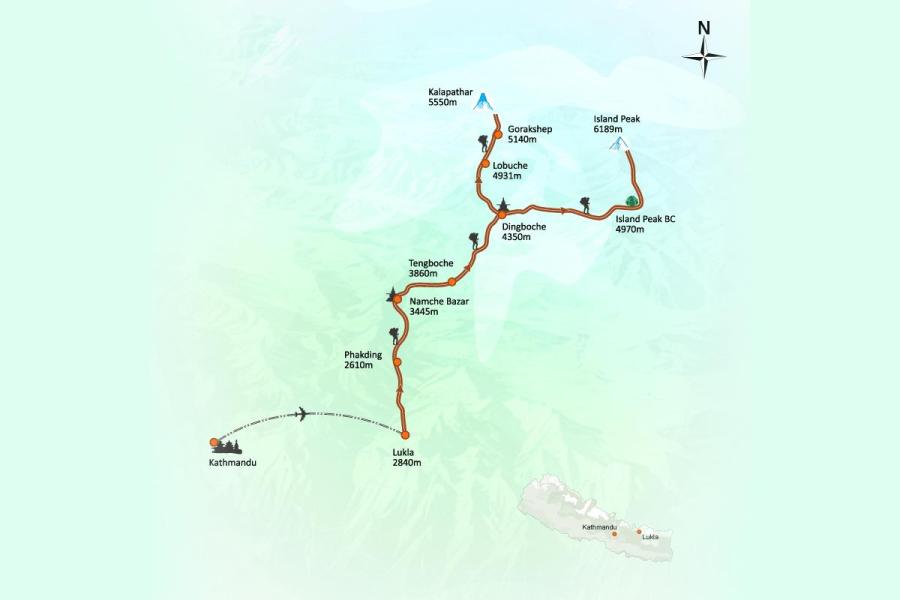
We recommend our guests have a valid insurance policy before undertaking an adventure in Nepal Himalaya. During treks and expeditions, the insurance should cover for expenses such as air ambulance, helicopter rescue, and medical care. As an adventure operator, we (NCA), are not permitted to arrange or sell insurance packages here in Nepal as per the Government of Nepal.
Traveling in high altitudes requires excellent body conditions both physically and mentally. Despite being physically and mentally prepared one should have a deep understanding of the high-altitude health hazards and the understanding of the acclimatization process.
The geography and terrain in the mountains rise to high elevations. The climbers have to walk 5-7 hours every day which needs good preparation. We have to adapt to the changing terrain and the climate. The success of the expedition depends upon the preparation and physical well-being. Additionally, personal food and diet preferences, influential allergies and personal medications need to be discussed and communicated well with the guide.
Travel Insurance for Everest Base Camp and Kala Patthar Trek
Travel insurance is essential for trekking to Everest Base Camp (EBC) and Kala Patthar due to the remote location, high altitude, and potential risks involved. Here’s what to consider when arranging travel insurance:
Medical Coverage:
- Emergency Medical Expenses: Ensure the policy covers emergency medical treatment, including hospitalization and evacuation.
- Altitude Coverage: Verify that the insurance covers medical expenses related to altitude sickness, which is common on high-altitude treks.
Emergency Evacuation:
- Coverage for Evacuation: The policy should cover emergency evacuation by helicopter or other means in case of severe illness or injury.
Trip Cancellation or Interruption:
- Cancellation Coverage: This covers costs if you need to cancel the trek before departure due to unforeseen circumstances.
- Interruption Coverage: Covers costs if you need to cut short your trip due to an emergency.
Personal Accident:
- Accidental Death and Dismemberment: Coverage in case of serious injury or death.
Lost or Delayed Luggage:
- Coverage for Loss: Compensation for lost, stolen, or delayed luggage.
Travel Delays:
- Trip Delay Compensation: Coverage for additional expenses due to travel delays.
- Emergency Contact: Ensure you have emergency contact numbers for your insurance provider.
Travel Insurance:
- Ensure it covers medical emergencies, evacuation, trip cancellation, and personal accidents.
- Choose a policy specialized for trekking and high-altitude activities.
Everest Base Camp and Kalapathar Trek Packing List
Here’s a comprehensive Everest Base Camp trek packing list to ensure you’re well-prepared for the trek:
Clothing
Base Layers:
- Moisture-wicking underwear
- Thermal tops and bottoms (for layering)
Mid Layers:
- Fleece jacket or sweater
- Insulating layer (down jacket or synthetic jacket)
Outer Layers:
- Waterproof and windproof jacket (with hood)
- Waterproof pants
Trekking Pants:
- Lightweight and quick-drying
- Convertible pants (optional)
Hats and Gloves:
- Warm hat (beanie)
- Sun hat or cap
- Warm gloves (waterproof if possible)
- Lightweight gloves (for lower altitudes)
Footwear:
- Trekking boots (waterproof and well-broken-in)
- Warm and moisture-wicking socks (multiple pairs)
- Gaiters (optional, for snow or mud)
Gear
Backpack:
- Daypack (20-30 liters) for daily use
- Duffel bag or large backpack for porters (60-70 liters)
Sleeping Gear:
- Sleeping bag (suitable for temperatures as low as -15°C or 5°F)
- Sleeping bag liner (optional for extra warmth)
Trekking Poles:
- Adjustable trekking poles (help with balance and reduce strain)
Headlamp/Flashlight:
- With extra batteries
Sunglasses:
- UV protection
Water Bottle and Purification:
- Water bottle (1-2 liters)
- Water purification tablets or filter
Personal Items
First Aid Kit:
- Basic medications (pain relievers, altitude sickness tablets, blister treatment)
- Personal prescriptions
Toiletries:
- Toothbrush and toothpaste
- Biodegradable soap
- Towel
- Sunscreen and lip balm (with SPF)
- Hand sanitizer
Documents:
- Passport
- Trekking permits (TIMS card, Sagarmatha National Park permit)
- Travel insurance details
Snacks:
- Energy bars, nuts, and dried fruit
Camera and Electronics:
- Camera (with spare batteries and memory cards)
- Mobile phone (with portable charger)
Cash:
- Nepalese rupees for personal expenses
Optional Items
- Travel Pillow: For added comfort during the trek.
- Gaiters: To keep snow or mud out of your boots.
- Entertainment: Books, journal, or e-reader for downtime.
Are you a licensed trekking agency?
Yes, we are a licensed company to operate adventure tours in Nepal. We have been organizing tours, Treks, and Expeditions for our valued clients for over two decades. Our long journey and experience in the field have made us pioneer in the industry.
Do the guides speak English and have first aid training?
All of our guides are experienced experts in their job and speak fluent English. Most of them are born in the areas they guide trekkers to and have several years of experience as trekking guides in the mountains. It's mandatory that they are trained in first aid and also carry a first aid kit with them during the trek.
Frequently Asked Questions (FAQs)
Is Kala Patthar better than Everest Base Camp?
It's not about what is better, It depends on what the traveler is seeking. Everest Base offers a unique view of the mountain whereas Kalapathar is famous for its sunrise and sunset views. If we talk about elevation, Kalapathar lies at a higher elevation than the base camp which provides it the advantage to see the surroundings with a Birds-eye view.
Is Kalapathar Everest Base Camp Trekking open all year?
Yes! Everest Base Camp is open all year but the best time to get on the trek is during its optimal season. This falls during spring and autumn when the weather is clear and you expect less rainfall in the area.
How long does it take to climb Kala Patthar?
The elevation of Kala Patthar is 5,644 meters (18,176 ft). From Ghorak Shep, the Kala Patthar summit walk takes roughly 2–3 hours. Most tours typically complete the trip early in the morning before descending to Lukla.
What is the difference between the Everest Base Camp trek and the Annapurna Base Camp trek?
The standard Annapurna Base Camp Trek length is 110 km, while the Everest Base Camp is 130 km. So, the Annapurna Base Camp is shorter compared to the Everest Base Camp. However, you can complete both of these treks through different routes, which can alter the number of days you will require to complete these treks.
What are the climatic conditions of Everest Base Camp and Kalapathar Trek?
The climate of Everest Base Camp and Kalapathar trek varies as per the seasons.
- Spring: Everest Base Camp trek weather is generally stable during the spring season.
- Autumn: Stable weather but colder temperatures
- Summer (Monsoon): Increased risk of rain, mud, and landslides
- Winter: Extreme cold and potential snowfall
Is trekking to Everest Base Camp difficult?
The Everest Base Camp Trek is a well-established, safe trek that poses little risk to the average trekker who follows all the preventative guidelines. A bit of preparation will ensure you have a safe trek through one of the most beautiful regions in the world.
Can a normal person climb Everest Base Camp?
Yes! A normal person with average physical condition and prior experience can climb Everest Base Camp. One should be aware of trek routes, rugged paths and acclimatization days.
What is the most difficult part of Everest Base Camp Trek?
The most Difficult part of the EBC trek is Crossing the challenging Cho La Pass. The pass requires proper preparation and dedication to adapt the body to the difficult condition of the trek.
What is the success rate of Everest Base Camp Trek?
The difficulty level of the Everest Base Camp trek has been graded a 'Moderately Difficult' level, and the success rate of the expedition is around 90% depending on the services of the operator you chose.
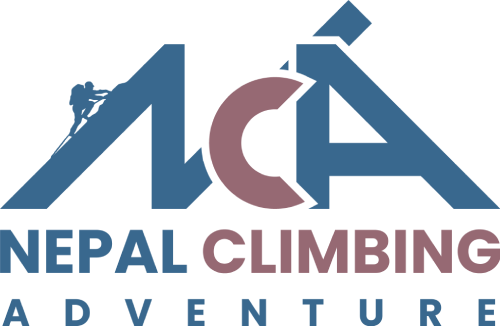
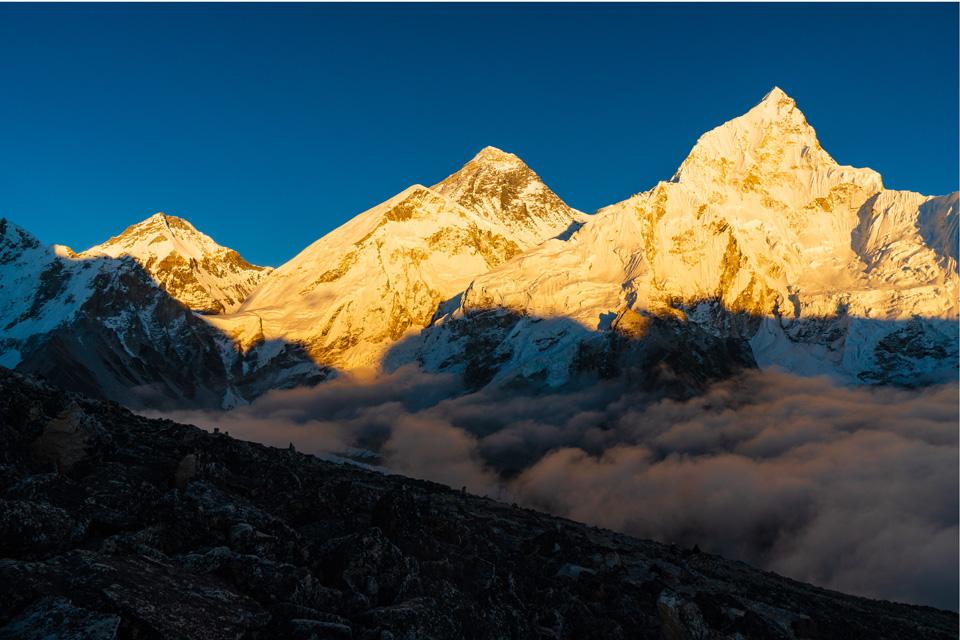
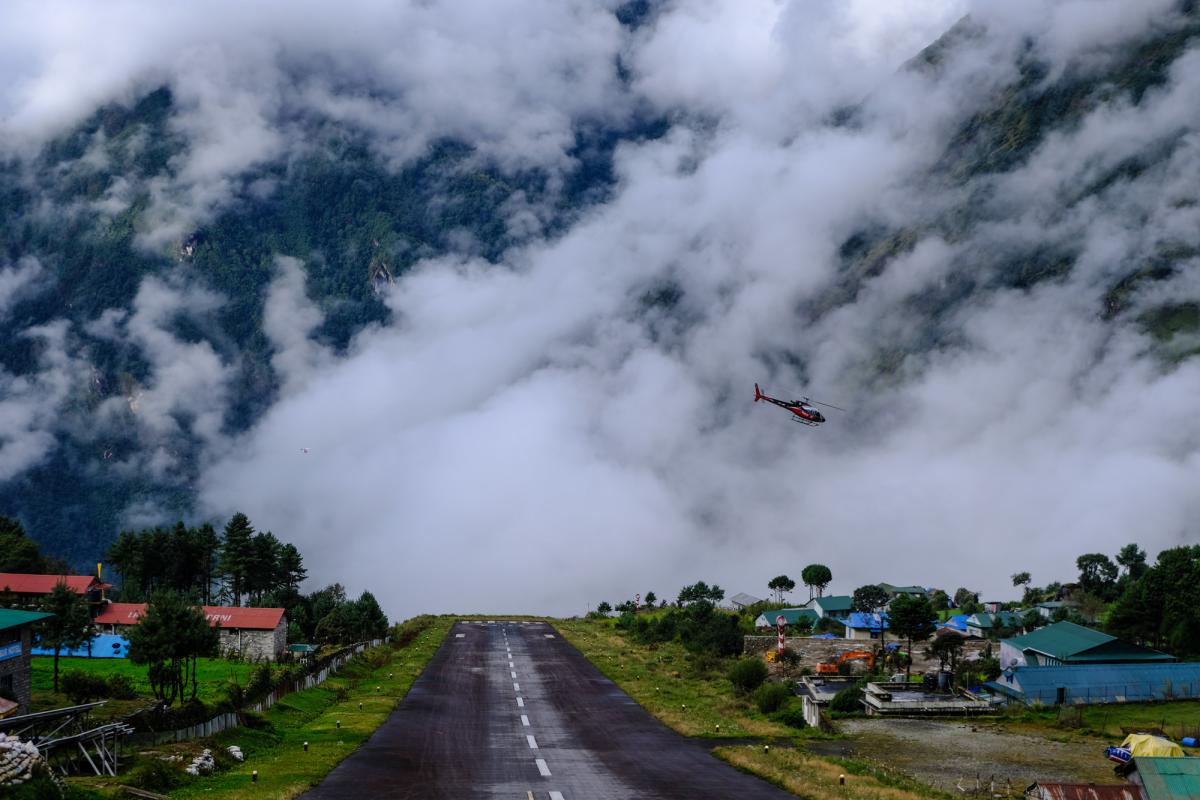
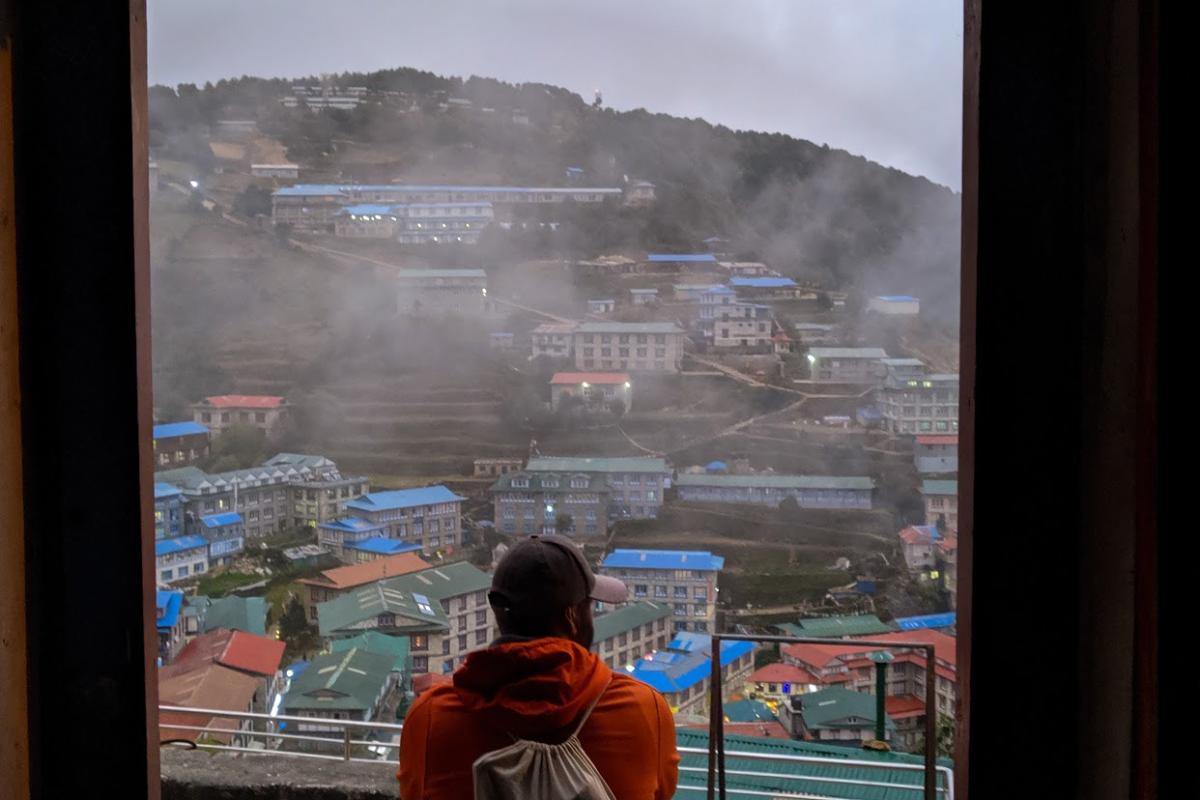
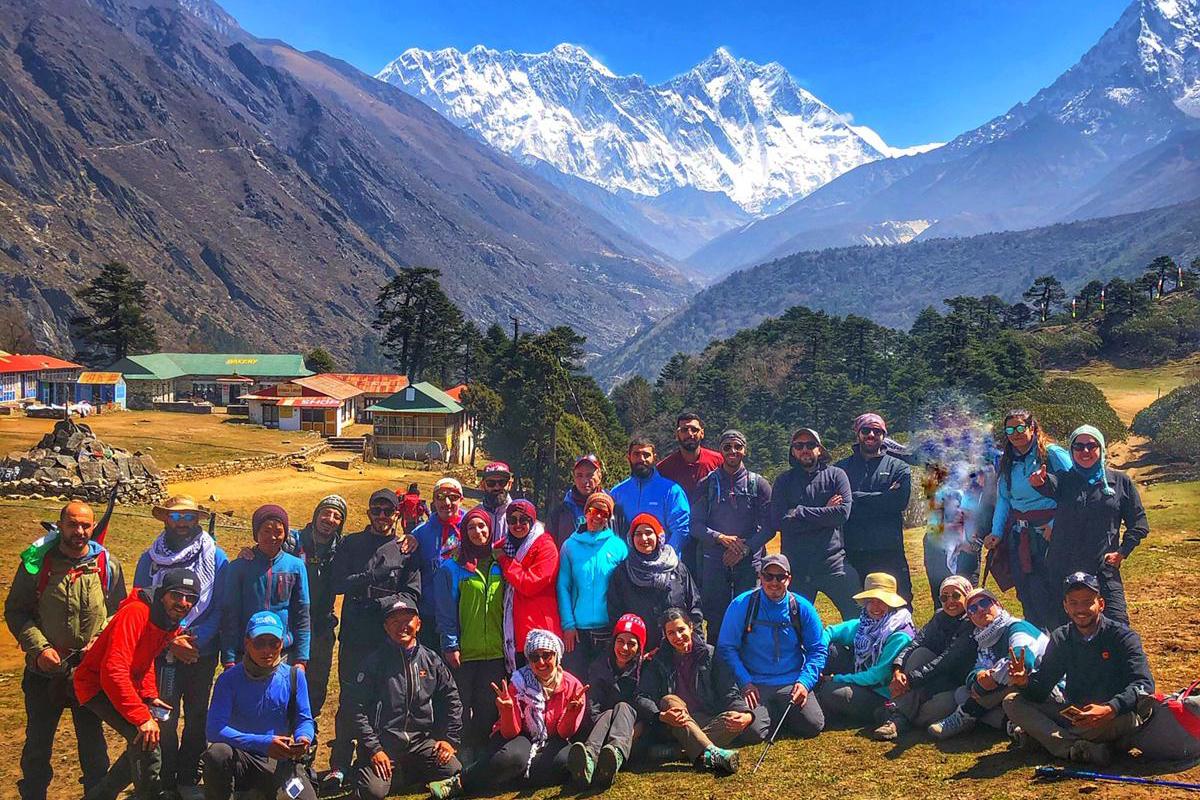
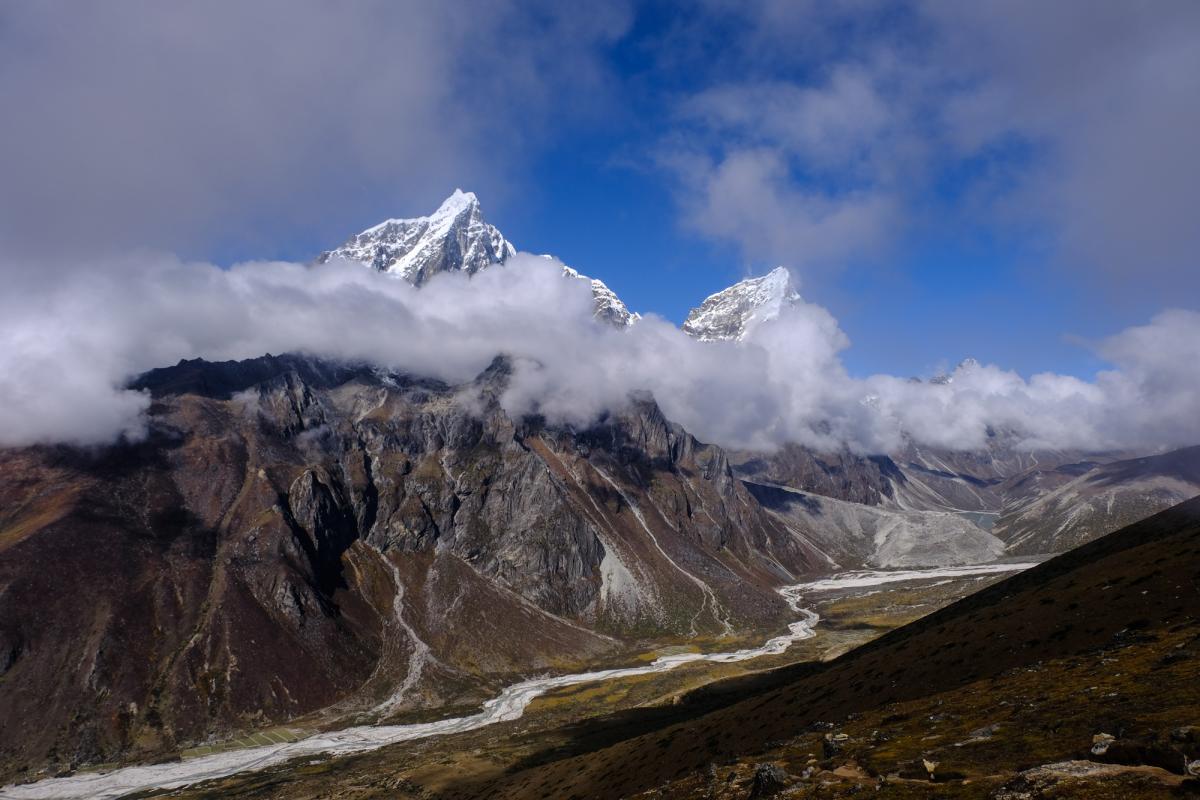
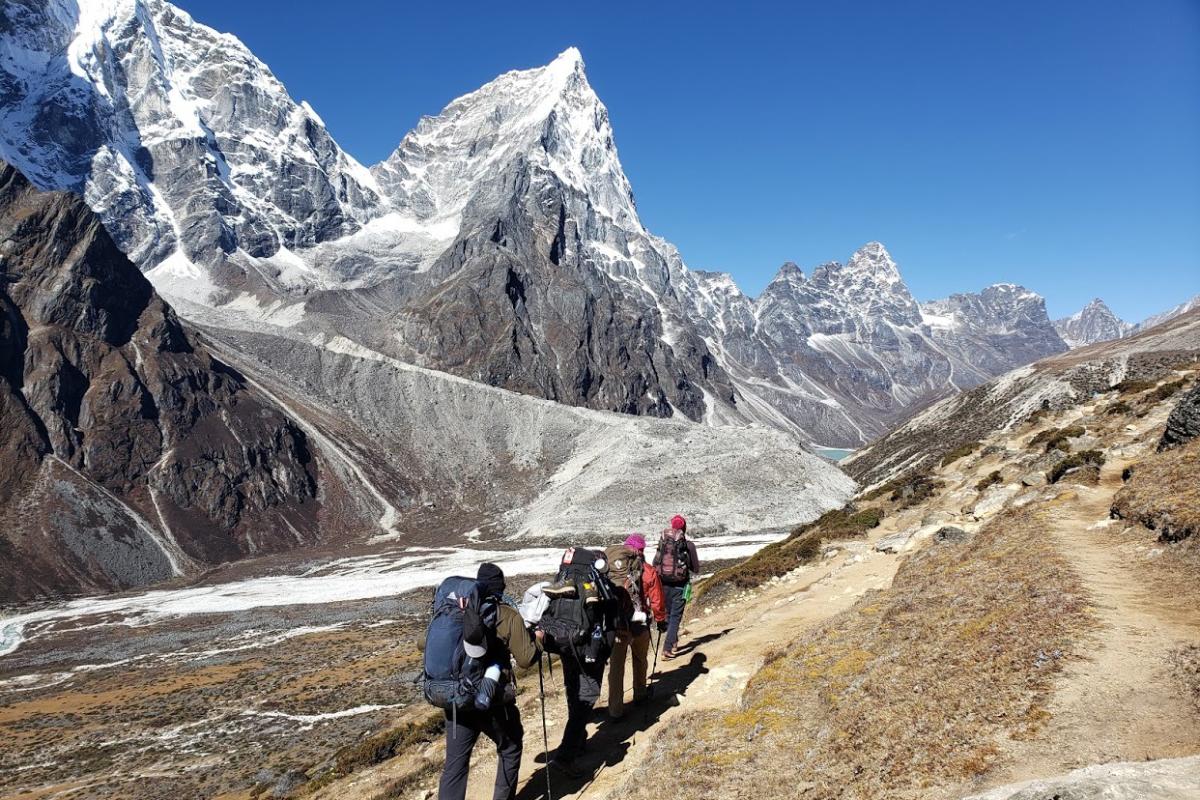
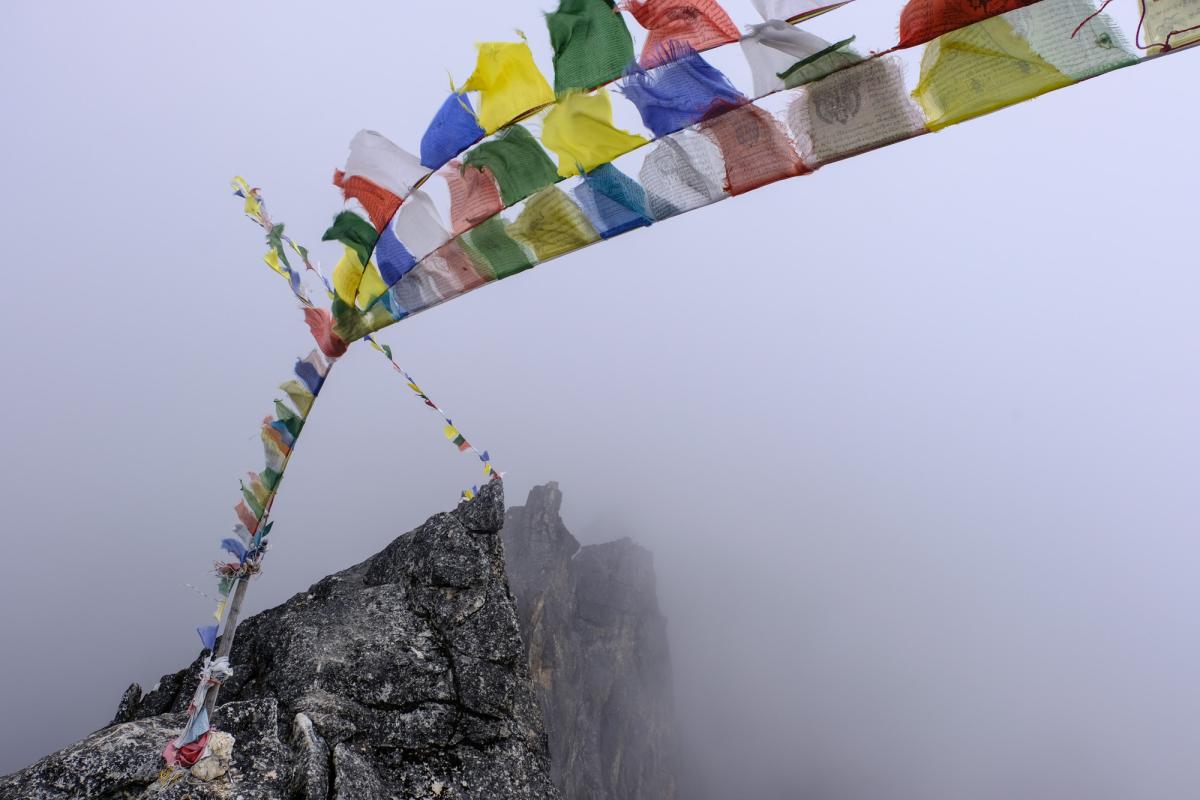
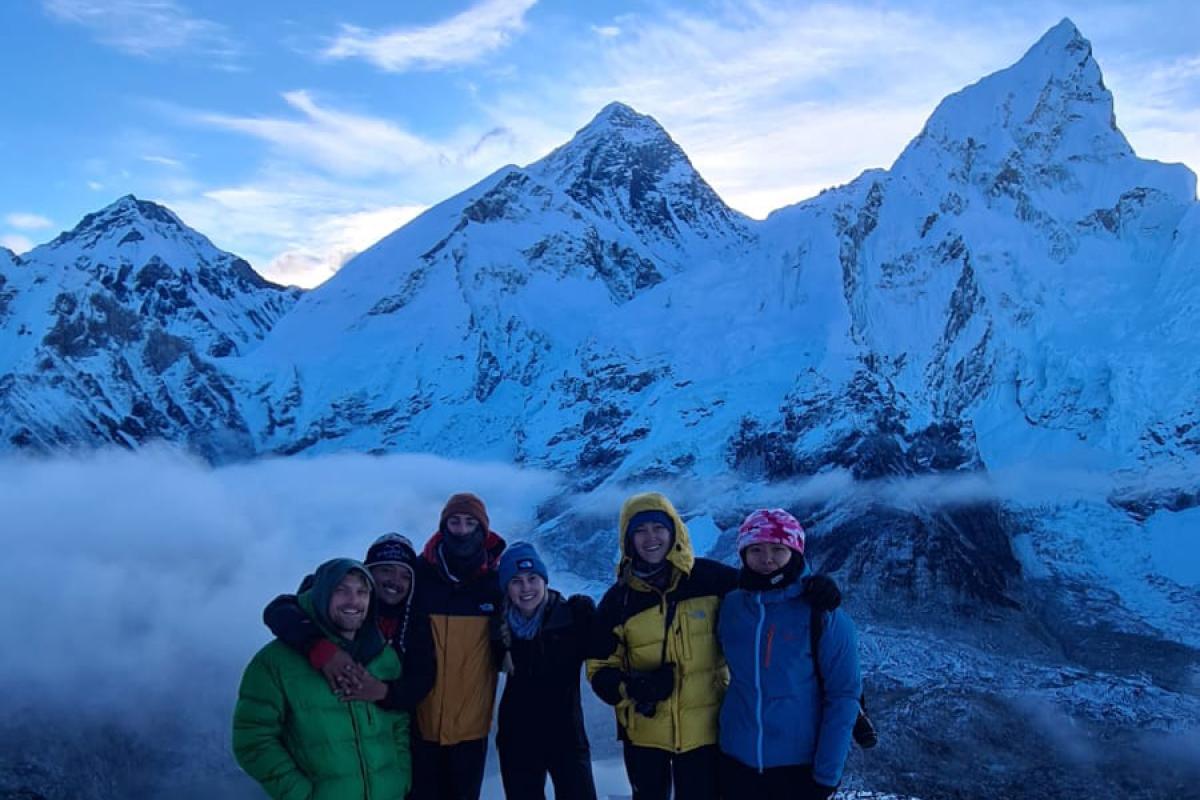
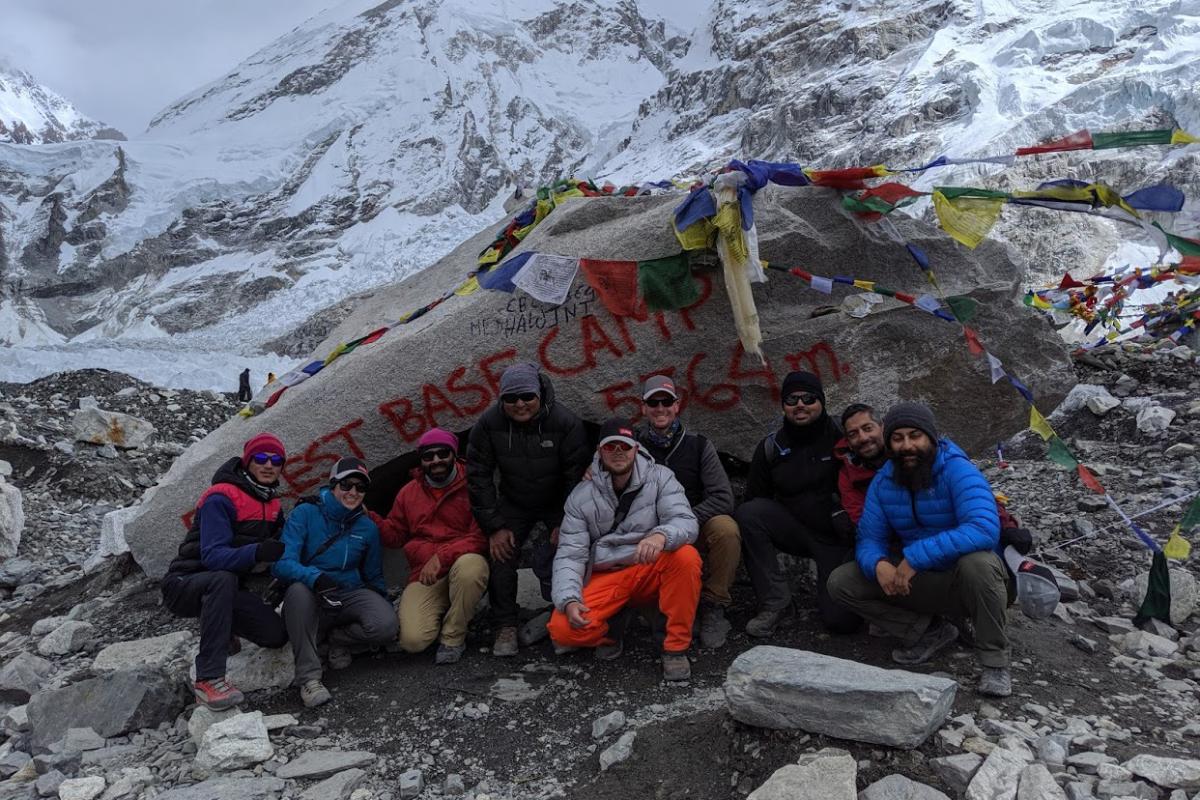

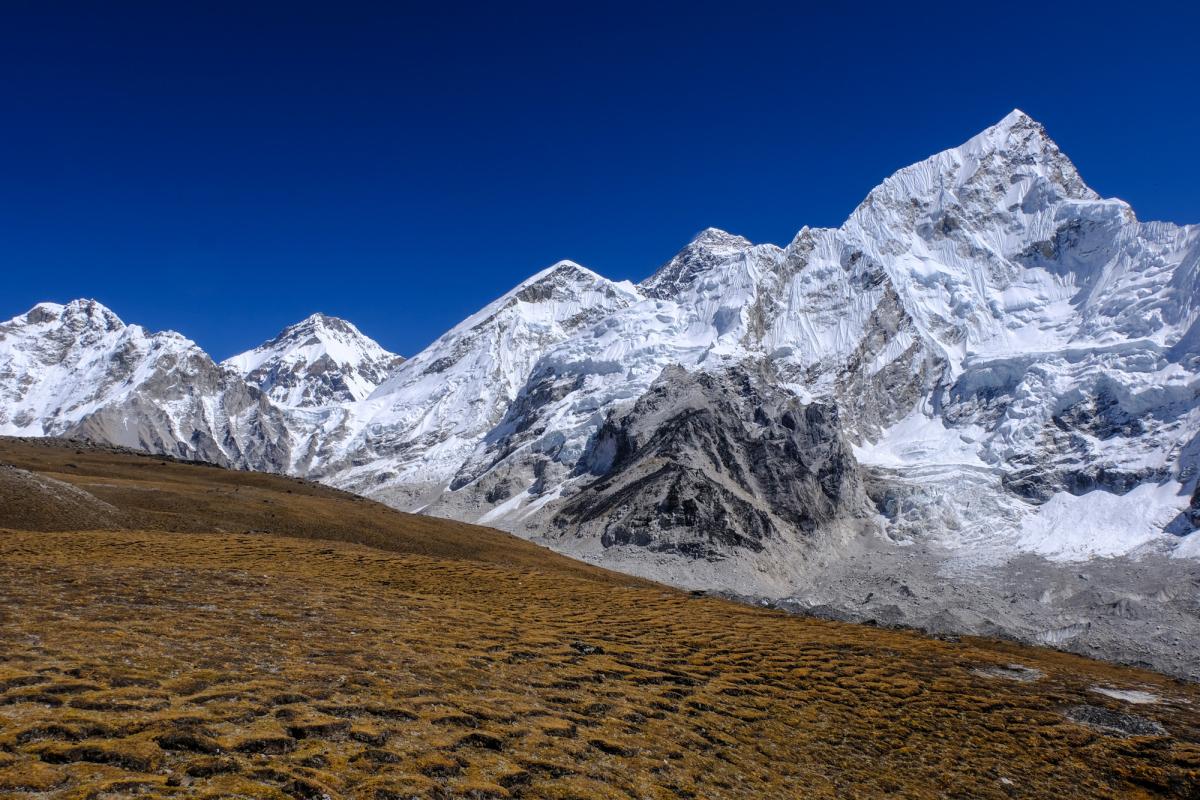
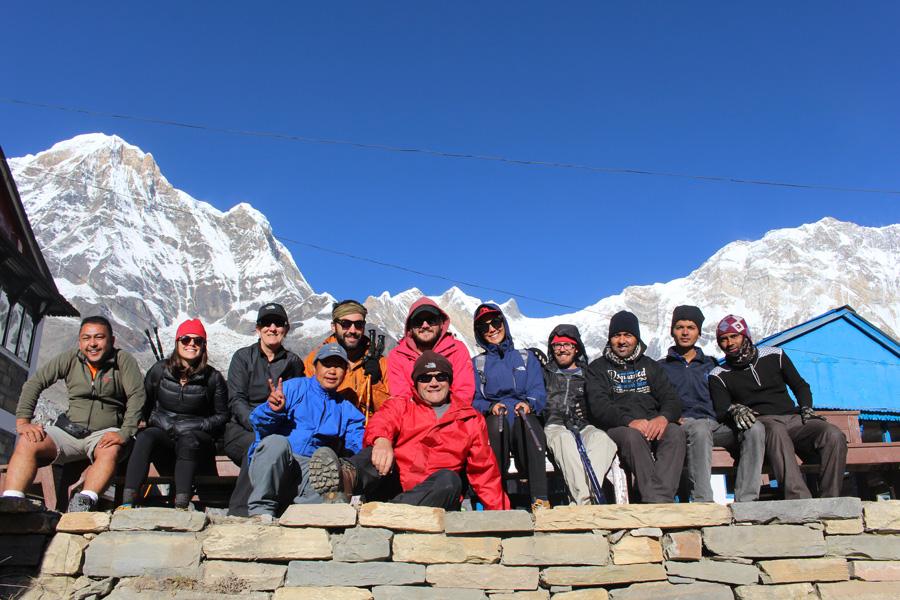
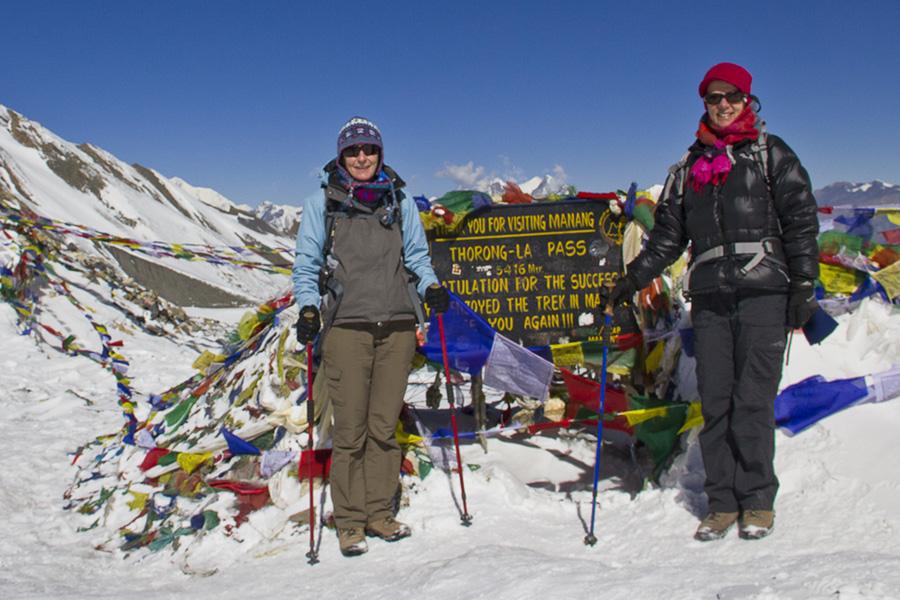
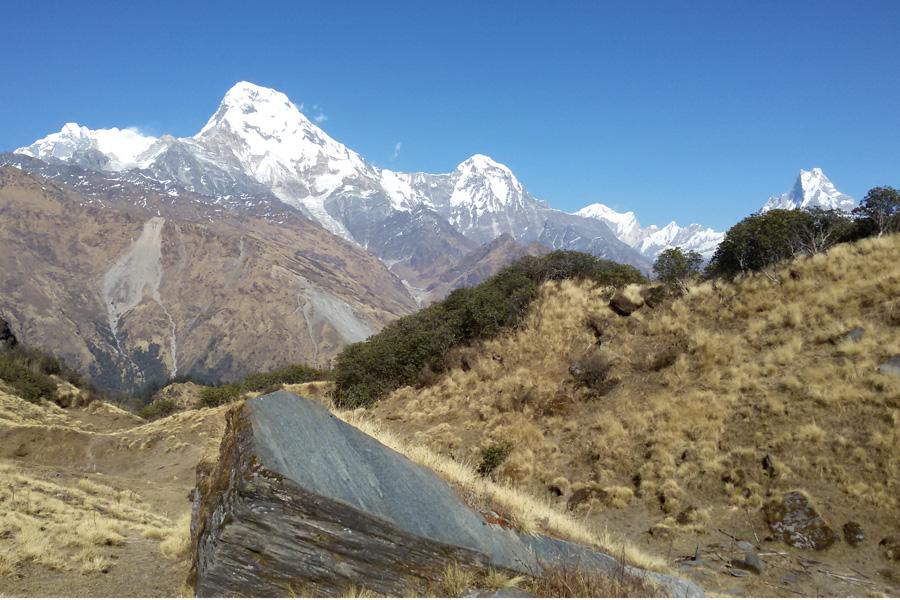
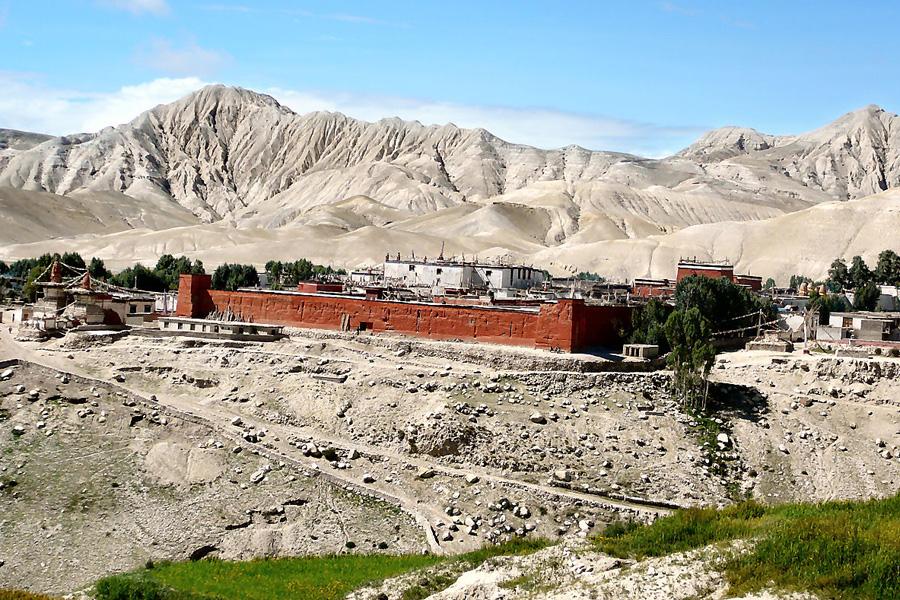
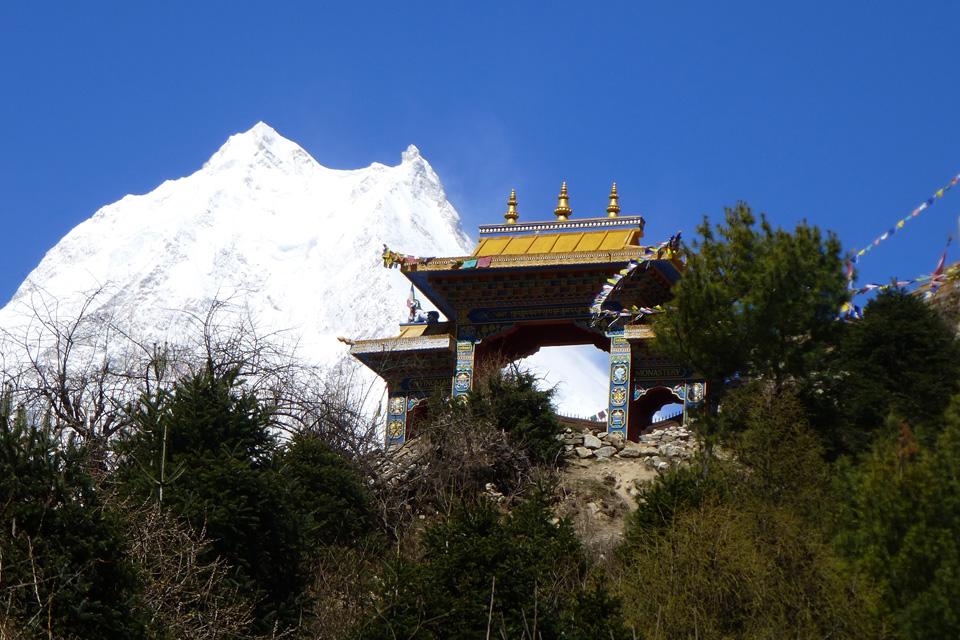
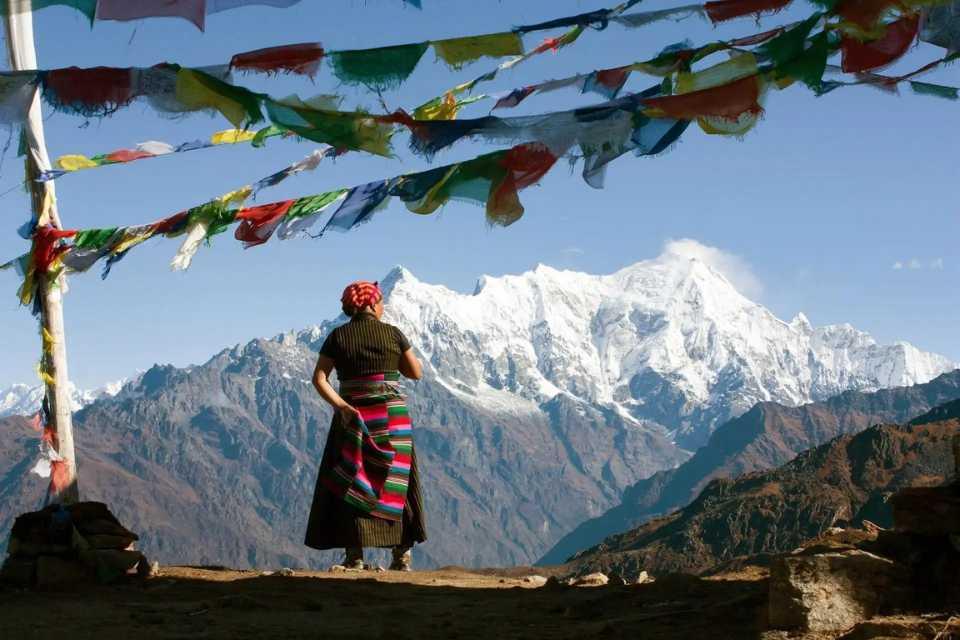
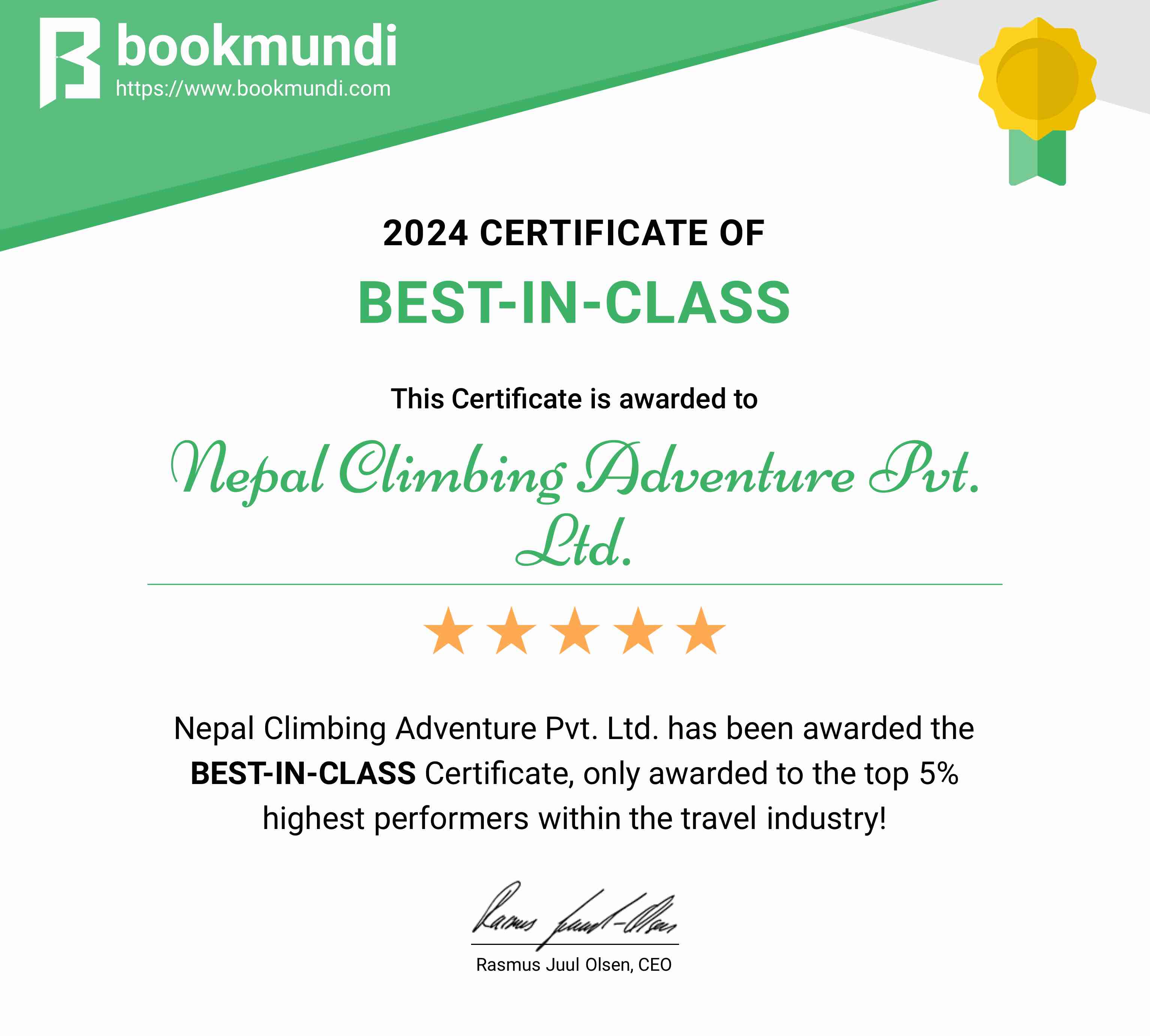

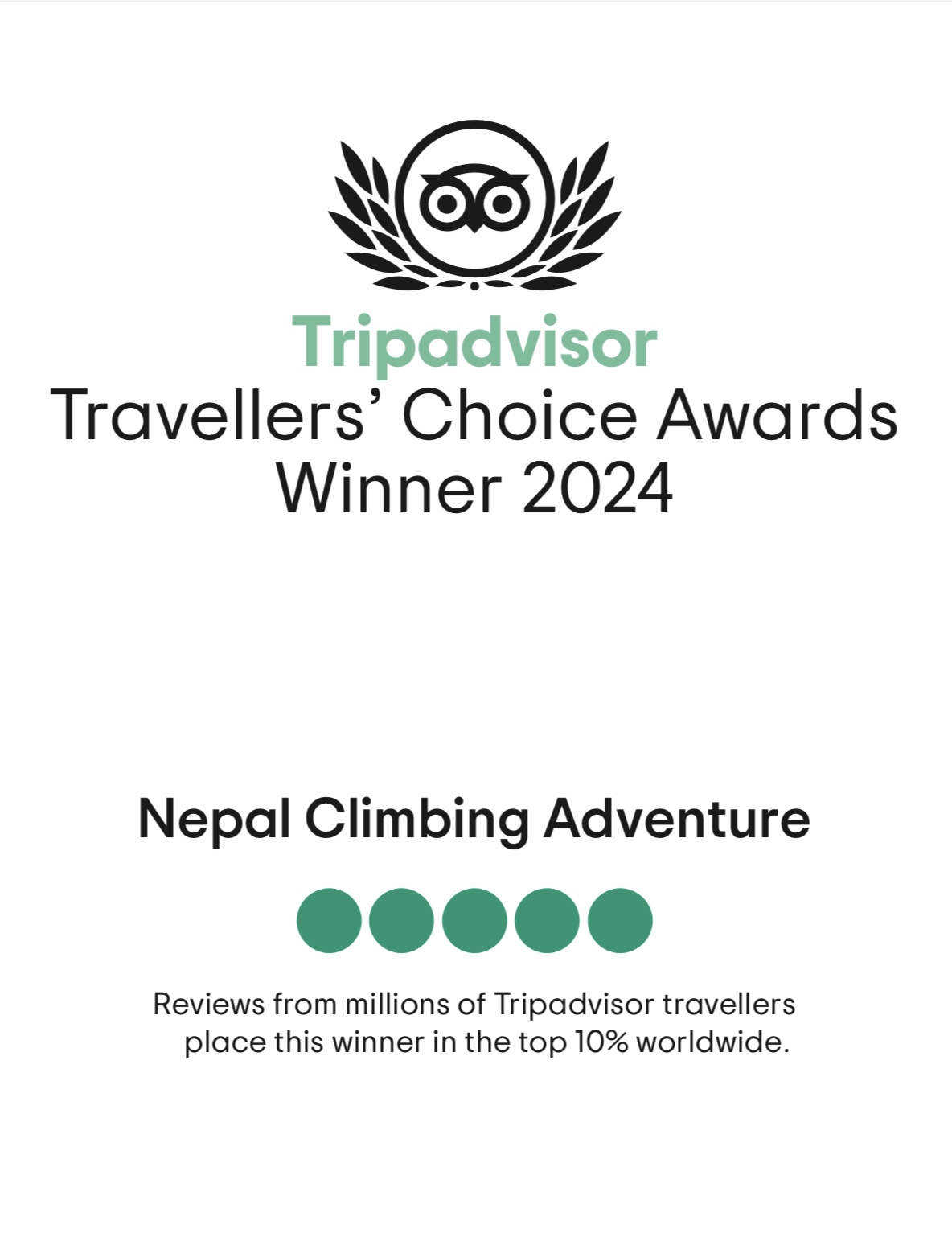
















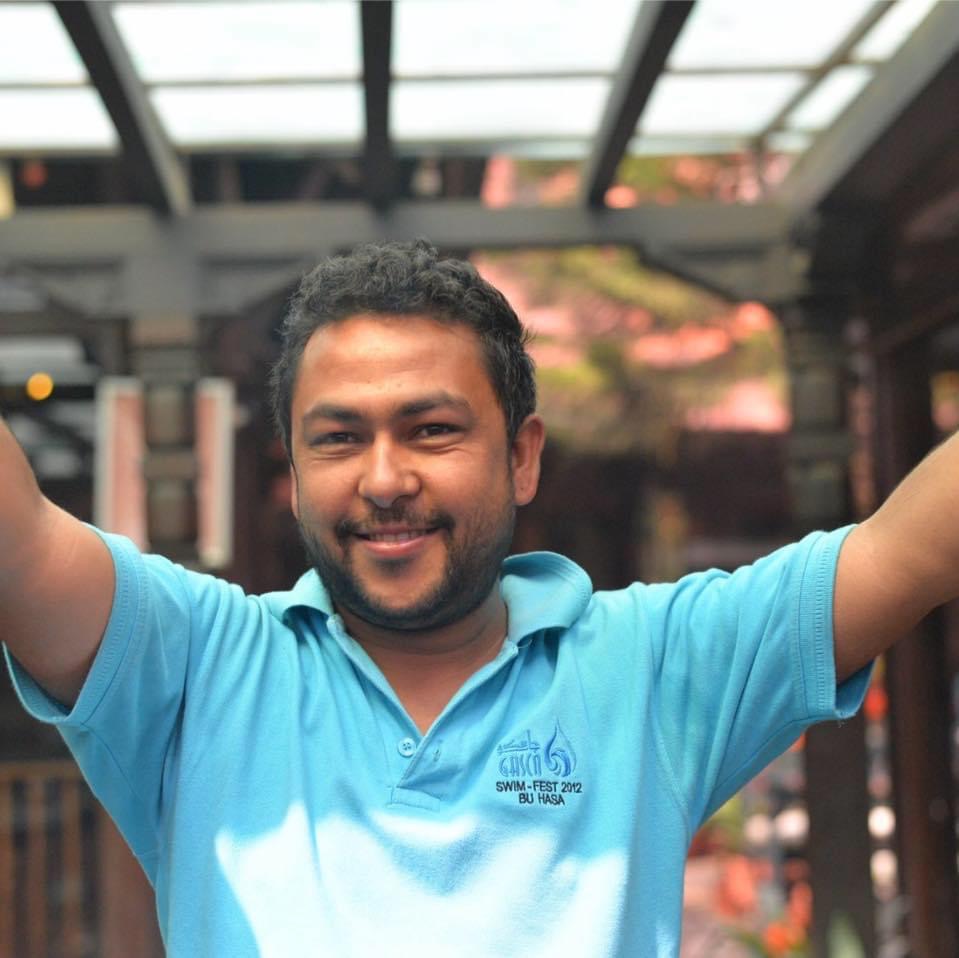 Chris Chhetri
Chris Chhetri